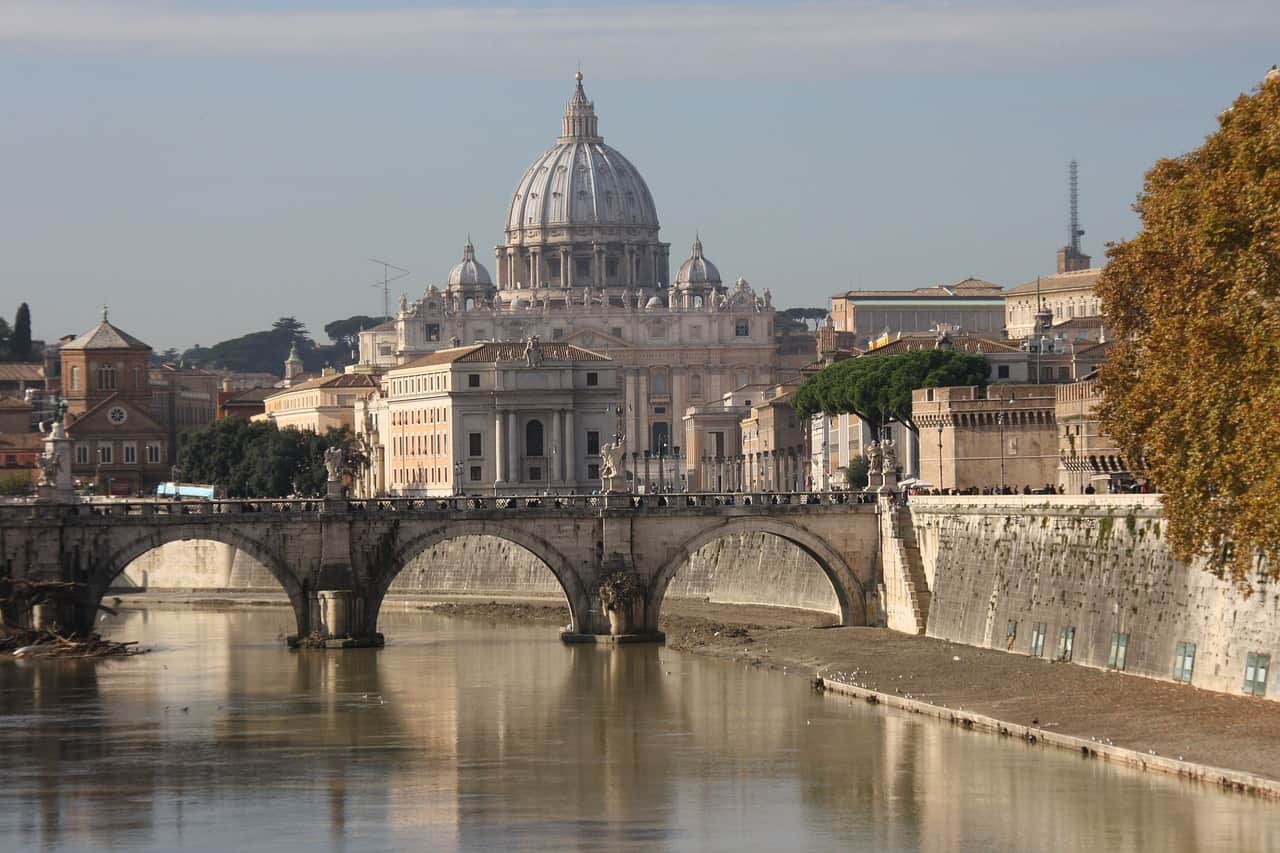How to Spend Your Long Weekend in Rome

Short breaks on a regular basis are much better for your health than long holidays. And, thanks to cheap flights, weekend getaways and all-inclusive deals, short break holidays, are more affordable today than they ever have been.
Discovering new destinations and a new culture has never been easier.
Don’t despair then if you don’t have enough time and money for that relaxing slow pace holiday on Italy’s exotic Amalfi coast. Think instead of a city break, with a destination in Europe.
Rome is an excellent choice for that European city break.
Often referred to as the eternal city, Rome is perfect for a weekend getaway, even better if you can squeeze in an extra day or two. You’ll fall in love with this popular capital city and will wonder why you didn’t choose the historic city destination before.
Rome is hot on the list for European destinations with some cheap flights and all-inclusive deals almost any time of the year. To make the most of this weekend break you need to move fast. You can cut through the congestion on a rented Vespa, the quintessentially Roman mode of transport, but donning a pair of walking shoes and doing a couple of walking tours through the meandering lanes and cobblestones in ancient Rome is an even better way to take in the city sights and mingle with the locals.
As the saying goes, Rome wasn’t built in a day, but if you plan carefully, you could fit in quite a few visits even in a weekend getaway. Once you get that cheap flight to this very trendy European destination, you’ll be ready for your cultural weekend break.
Here are two walking tours you could do for your City break.
Walking Tour 1
Start this walking tour with the Spanish Steps. If you’re using public transport take the Metro line A and get off at Spagna.
The Spanish Steps on the Piazza di Spagna (the Spanish Place) a total 135 steps is so called because of the Spanish Embassy which was once on the square. The set of steps created in 1723 are quite majestic and aesthetic despite its irregular shape. Start early to beat the crowds, and make your way halfway up to the small square before climbing to the top. It’s a great place to sit for awhile merely to take in the atmosphere and to marvel at the unique, elegant design of the square.
When you get to the top, have a quick look at one of Rome’s highest churches Trinita dei Monti - a French Church on top of the Spanish Steps. Ever since the church was restored in 1823, it has had a French National as the cardinal. Trinita dei Monti is more impressive because of its unique location. Interestingly, the church occupies an area that was once an enormous vineyard.
If you’re into shopping, stay awhile in the Spanish Steps area: it's a fashionable upmarket shopping district where you'll want to feast your eyes on Italian luxury at its best.
Trevi Fountain
Follow your map - and the crowds - to get to Trevi fountain the most spectacular fountain in Rome. You won’t find buses in this part of ancient Rome: allow twenty minutes or so for a leisurely walk to get to this truly magnificent piece of art. It’s not easy to get close up to appreciate Rome’s largest Baroque fountain so gently ease your way through to the front of Trevi Fountain if you want to admire the figure of the sea god riding a shell - shaped chariot pulled by seahorses. And of course like everyone else you want that particular photo. Legend has it that if you throw a coin in Trevi Fountain, you get to revisit Rome.
The Pantheon
A ten-minute walk will get you to the Pantheon, the Roman temple dedicated to the Gods and later converted into a church, it's a magnificent building more than 43 meters high. The ancient Pantheon, listed as one of Rome’s UNESCO World Heritage Sites, dominates the Piazza della Rotunda, and is the best preserved of Rome’s ancient structures. Step inside and be swept up by the sea of tourists, also having their weekend break, everyone anxious to get a glimpse of the resting places of some famous people: kings, queens, and artists such as the famous painter Raphael who requested to be buried in the Pantheon.
The Colosseum
After your lunch break continue on to the Colosseum metro stop Collosseo.
Your city break will not be complete without visiting one of the world’s greatest architectural works.
The Colosseum featuring 450 years of games in Rome is one of the most recognizable buildings in the eternal city. The oval amphitheater made of stone and concrete is vast. At its construction 2,000 years ago Rome’s Colosseum was able to accommodate up to 55,000 spectators who could enter from 80 entrances to watch the gladiators fight. Two-thirds of the Colosseum is now destroyed, but it represents the iconic symbol of the eternal city.
https://twitter.com/seeyouitaly/status/1050035758004867073
Walking Tour 11
You will most definitely need more than half a day for this second walking tour of the Vatican City.
Situated on the West bank of the river Tiber is the world’s smallest country occupying around 109 acres with roughly 1000 non-permanent residents (nuns, priests, guards, etc). This is The Vatican City, home to the pope and headquarters of the Catholic Church; it serves as the spiritual center and a popular destination for pilgrims and visitors wanting to visit St. Peter’s Basilica, to seek the Pope’s blessing and to visit the Vatican museums. The Vatican City is considered one of the most sacred places in Christendom.
Vatican Museums
As it’s a short break holiday, it’s best to book your ticket in advance for The Vatican museum: this is by far the best option for avoiding the queues. Founded by Pope Julius 11, the museums represent centuries of history and art: this is without a doubt one of the largest complexes in the world. It houses 11 different galleries with priceless collections accumulated over centuries by the different pontiffs since the Renaissance.
The Vatican Museums have some fantastic elegant stuff with a long history stretching over a distance of around seven kilometers (4.4 miles) so even though you might allow four or five hours for the visit you won’t be able to see the entire museum in one visit.
The Sistine Chapel
A visit to the eternal city should include the Sistine Chapel, the last room you get to see if you’re visiting the Vatican museums. This is the site for the main Papal ceremonies such as the electing and inaugurating of a new pope. Originally the Sistine Chapel built in 1473-1481 was meant to be a private chapel for Pope Sixtus 1V.
Bear in mind though that the Sistine Chapel is packed tightly at visiting times and understandably museum officials are not keen for visitors to linger too long. To avoid too much neck strain, try to grab a seat on the bench on the left as you enter - a good option for viewing Michelangelo’s ceiling masterpiece. It took the artist little over four years to paint the Renaissance frescoes illustrating scenes from Genesis. The Renaissance painter also painted The Last Judgment, the name of the mural behind the altar. The paintings on the walls of the Sistine Chapel include works by other artists such as Botticelli, Perugino, and Luca - they are all spectacular.
Be warned, you will be continuously reminded by security not to take photos or videos.
The Basilica is about 20 minutes away from the Vatican museums, best visited early in the morning or late in the evening to avoid the crowds – be patient as they too are enjoying their European City break.
St. Peter’s Basilica
You can understand why heavy security and scanners greet visitors at the Basilica. The Basilica, built on the tomb of St. Peter is often referred to as St. Peter’s Basilica. It is one of the holiest sites for the Roman Catholic Church. This enormous Basilica will take your breath away, there’s so much to see that it’s best to get an audio guide.
Try to make it to the top of the dome for some excellent views and photos of the city. You can also visit the crypt of the basilica.
https://twitter.com/Christian8Pics/status/1048401227397124101
Other Historical and Cultural Sites
People have a habit of falling in love with the eternal city. Rome cloaks you in history, it makes you intoxicated. Here are other enchanting things you can do if time allows:
Visit the Roman Forum and walk up the Palatine Hill
Unfortunately, there are no leaflets or guides at The Roman Forum, but this area was the core of all the daily activities, a commercial and political center for the capital. The forum is situated between Palatine Hill and Capitoline Hill; it used to be a busy marketplace at one time and also served as an arena, a place for public meetings, religious ceremonies as well as public spectacles. The monuments and buildings fell into ruins when the Roman Empire fell. Today the Roman forum is a mix of marble, arches, and ruins but still worth a visit.
Palatine Hill is the most famous of Rome’s seven hills. This was where the rich and famous lived, desirable property at the time because of its central location, the views the myths and legends.
According to Roman mythology, this is the site of the cave where Romulus and Remus were found by the she-wolf. If you’re planning your short break holiday in the summer, Palatine Hill is a great spot for a picnic.
Visit Quattro Fiumi
The ornate Fontaine des Quattro Fiumi, the Fountain of the Four Rivers is situated in the bustling Navona Square. You’ll love the atmosphere of this square particularly inviting in the early evening. Spend a few minutes before your cocktails admiring the Fontana dei Quattro Fiumi, the biggest fountain on the square built in 1651: admire the four figures that represent the Rivers Nile, Ganges, Rio de la Plata, and the Danube.
Lunch Bites at the Piazza del Popola
This is the People’s Square. As you would expect, it is vibrant, and full of life with lots of restaurants – a fun place to be. But it seems that was not always so. Piazza del Popola has a legend associated with demented Emperor Nero who was buried in the area. The people who lived there were convinced that Nero, the last most infamous Roman Emperor haunted Piazza del Popola. To stop the negative energy they raised enough money to build a small church at the site.
https://twitter.com/CRFASHIONBOOK/status/1049600899201556480
Night life at Campo di’ Fiori
If you're not too exhausted, forget your all inclusive for an evening and hang out at Campo di’ Fiori instead - a popular meeting place for the young and not so young. You’ll find loads of cocktail bars and restaurants here with great authentic atmosphere. You’ll be spoilt for choice at Campo di’ Fiori.
During the day Campo di’ Fiori transforms into a colorful outdoor market where you can buy almost everything: fruit, vegetables, meat, and clothes. Translated Campo di’ Fiori means 'field of flowers' as during the Middle Ages, the square was simply a meadow.
Now that you’ve had your city break you might want to explore more of Italy. The splendid Amalfi Coast could be your next European destination, a dream to explore. The Amalfi coast is long and reputed to be one of the most spectacular scenic views in Europe. But driving in this part of Italy can be a bit tricky because of the winding, narrow road. Your best bet would be to look at Circumvesuviana trains when planning your trip. Circumvesuviana trains is a regional network of lines running out of Naples, not a part of the National Italian Railway.
Bon voyage.
Sign up for FD's newsletter
The freshest stories from the food and dating world every week.




